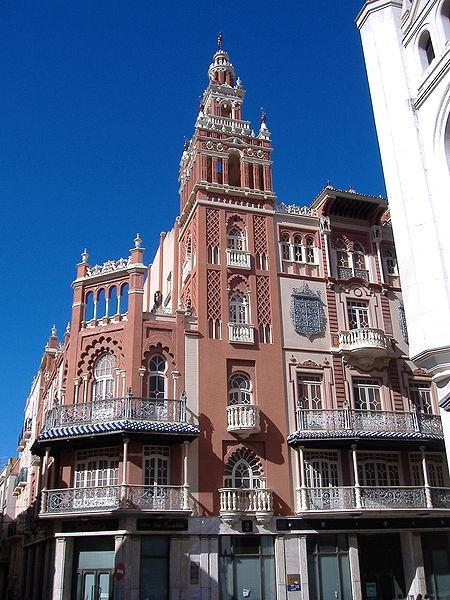Badajoz, Extremadura, Spain
Suggest Place to Visit
3294
Track to location with GPS |
 |
origins
In Roman times there are already numerous villas in the surroundings, at which time some historians, apparently without a historical basis, give the city the name of Pax Augusta, Civitas Pacensis. It will be in Visigothic times when in Badajoz there are significant buildings, according to the remains found, although the existence of the city and its bishopric remains unproven, which according to some theories already existed, remaining in Mozarabic times.
The chronicler Hauberto Hispalense fixes the arrival of the Arab invaders to Badajoz in the year 715, at which time the small Visigoth population then existing would be destroyed.
Merida, the old great imperial city, did not accept dependence on Muslim power and rose up against it on many occasions. In 827 with Ludovico Pío, king of the Franks, in 835 with the help of the Christians of Toledo or in 862, in addition to many other attempts. Each rebellion was harshly put down by the Arabs with the result of numerous executions of insurgents, capture of hostages, damage to the city with destruction of Roman monuments, and razing of its powerful fortifications. In retaliation for the last uprising, and to avoid those that were foreseeable from now on by the people of Mérida, the last remains of its walls were demolished in 868 by order of the Emir Mohamed I, leaving only the main part of strength. Large numbers of victims were also caused. With this the city was practically destroyed and almost depopulated.
The city of Badajoz was refounded in 875 by the renegade Muladi from Mérida Abd al-Rahmán Ibn Marwan El Chilliqui under the name of Batalyaws, on a settlement occupied since the most remote times of prehistory, Badajoz settled on a Visigothic population then already disappeared, or at least in a high degree of decline, taking advantage of the top of one of the two hills where the current city was installed is the Cabezo de la Muela or Cabezo del Monturio. Opposite, on the right bank of the Guadiana, is the Cuesta de Orinaza or Cerro de San Cristóbal, also formerly known as Baxernal or Baxarnal.
Originally the new city was given the name of Mu´assassat Batalyaws, which means the Foundation of Batalyaws, although it is not yet known with certainty what the word batalyaws, possibly an earlier toponym of the Arabs, meant. Another possibility is to establish its origin in the Arabic expression ´´balad al yawz´´ (land of walnut trees) as suggested by Fray Diego de Guadix in 1593.
For about forty years approximately Mu´assassat Batalyaws was an independent city of Córdoba, reigning Marwan and his descendants, until Abderraman III, the first Caliph, annexed Batalyaws, being then one of the most important cities of Al-Andalus.
Today the people of Badajoz remember the founding of their city in the festival called Almossasa Batalyaws.
Hispano-Arab period
In a short time a prosperous city flourished, the most important being founded entirely by the Hispano-Arabs. It had periods of independence, such as the time when the Marwan ruled it, or that of the Taifa kingdoms. The Torre de Espantaperros, of Almohad origin and octagonal in plan, was built in 1169, to the time of the first Taifa.
The Taifa of Badajoz became the most extensive of all the taifa of the peninsula. It encompassed not only Extremadura but also a good part of Portugal, including Lisbon and the border with the Duero.
Reconquest
The city was conquered by Alfonso IX, King of León, on March 19, 1230. Said King grants the City a banner that consisted of a crimson flag on one side of which the arms of the City appeared and on the other the of the Monarch. Shortly after its conquest, in the time of Alfonso X the Wise, the bishopric was granted to the city, beginning the works of the Cathedral of San Juan Bautista. From this stage, specifically from the 13th century, comes the city's flag, which still remains in force today because it was never repealed, despite the fact that it has not been used for two centuries despite popular interest.
In 1336, during the reign of Alfonso XI the Justiciero, the troops of King Alfonso IV of Portugal besieged the city of Badajoz. Shortly after, the Castilian-Leonese troops, among which were those of Pedro Ponce de León ´´el Viejo´´ and those of Juan Alonso Pérez de Guzmán, second lord of Sanlúcar de Barrameda and son of Alonso Pérez de Guzmán, defeated the troops of King Alfonso IV of Portugal in the battle of Villanueva de Barcarrota, and with their victory, forced the King of Portugal to lift the siege of Badajoz.
After spending a period of decline, in which the city was depopulated, it re-emerged again helped by its status as a border city.
16th and 17th centuries
On the occasion of annexing the Spanish kingdoms with Portugal, Felipe II transferred the court to Badajoz and Queen Anne of Austria died there.
From 1580 to 1640 the absence of war made the city flourish again. His contribution to the conquest of America was numerous, since according to the historian Vicente Navarro del Castillo, 428 inhabitants of Badajoz participated in said conquest
Century XVIII
At the end of the seventeenth and early eighteenth centuries, the city again encountered a period of war. First the Portuguese War of Restoration (1640) and, after it, the War of the Spanish Succession (1702 to 1713). In both he suffered numerous attacks and sieges. For this reason, the city does not have large buildings that will last over time. Instead, they have bequeathed us the impressive ramparts of the Vauban-style bastioned complex that protected the city.
XIX century
During the War of Independence, already in the 19th century, the city suffered three sieges: in the first siege, Badajoz was taken - for the first time in its history - by the French. The second siege was carried out by the allied troops and caused the Battle of La Albuera. In the third siege, in 1812 the English troops recovered the city, dedicating themselves to pillage and uncontrolled looting after its taking.
At the fall of the Old Regime, the town became a constitutional municipality in the Extremadura region. Since 1834 it has been the head of the Judicial Party of Badajoz. [6] In the 1842 census it had 2,865 households and 11,715 neighbors.
The end of the 19th century and the beginning of the 20th century was a period of great growth for Badajoz. Outstanding architectural works were carried out in the city center; Extramural neighborhoods were created (San Fernando and San Roque), and the demolition of the walled enclosure was proposed, a fact that would not occur until 1931 with the opening of three gaps.
Badajoz is a Spanish city, capital of the province of the same name (autonomous community of Extremadura). It belongs to and is the seat of the Tierra de Badajoz region and head of the Badajoz judicial district.
It was founded in the 9th century, during the Muslim domination of the Iberian Peninsula and currently has 148,334 inhabitants (INE 2009), which represents 21.54% of the total population of its province and 13.45% of the community Extremadura. This figure places Badajoz as the most populated municipality in Extremadura and in the Guadiana river basin, one of the most important rivers in the Iberian Peninsula, which crosses the city from east to west, and then turns south. It is also the third provincial capital with the largest number of inhabitants in the Submeseta Sur, after Madrid and Albacete.
Its municipal area, which borders Portugal to the west, occupies an area of 1,470 km². It is the third largest in Spain, after Cáceres, with 1,750.33 km², and Lorca (Murcia), with 1,675.21 km². It is made up of 10 population centers, among which, in addition to the Badajo urban area, Gévora, Guadiana, Valdebótoa and Villafranco del Guadiana stand out, all of them with more than 1,000 inhabitants.
Economy
The services sector is the dominant one in the city. The trade is fed by clients from the province and Portugal. Due to the importance of these commercial relations with the neighboring country, in 2006 the new installation of the Badajoz Fair Institution (IFEBA) was inaugurated, next to the border of the [[Caya river].
It also represents an important communication hub between two countries, and the construction of a Logistics Platform and the arrival of the High Speed train are planned. The city also has an airport, located 14 km from the urban center, expanded in 2009, a Conference Center and a water and leisure park, ´´Lusiberia´´.
The industrial land of the city is almost entirely concentrated in a large industrial estate, ´´El Nevero´´, located next to the A-5, which is continuously in the process of expansion. Companies from the most varied sectors are installed in it. In addition, there are other industrial lands in the accesses to the city and in small industrial estates in neighborhoods such as San Roque
In the summer of 2007, the construction project of the new headquarters of the Caja de Badajoz was presented, which began to be built in October 2008. This entity is currently building a financial center that will have a building 88 meters high, which will make it the tallest building in Extremadura. The construction of this center represents the good health that the economy of the city begins to enjoy.
tourism
The city of Badajoz has numerous tourist enclaves that trace its history, that of Extremadura and Spain from the year 875, the date when Ibn Marwan founded the city, until today. In addition to having numerous important festivals, fairs and parties throughout the country, Badajoz has an important hotel enclave, which on dates such as Easter or Carnivals usually reaches 100% of occupied hotel beds.
These hotel beds will be joined shortly by other hotels under construction or project, apart from a National Parador with 90 rooms and an urban spa in the building of the old Provincial Hospital.
Weather
Badajoz has a continentalized Mediterranean climate with Atlantic influence, due to the proximity of the Portuguese coast.
Winters are mild, with lows that rarely drop below 0 ° C, and summers are hot, with highs that occasionally approach 45 ° C. Rainfall is irregular, with an annual average of 475 mm. The months with the highest rainfall are the last of the year: November and December. Summers are dry.
In autumn the climate is more unstable than in the rest of the year, with some frequent storms, often dry.
Both humidity and winds are low. However, the appearance of fogs is frequent.
Demography
Badajoz has 148,334 inhabitants (INE 2009), a figure that rises to 150,627, according to data from the Municipal Register (December 2008) and the Badajoz Region has 175,256 inhabitants. Although it is the city with the largest number of inhabitants in Extremadura, it has a relatively low population density (100.91 inhabitants / km²), due to the extension of its municipal area, one of the largest in Spain, with 1,470 km² .
Even so, it has a higher density than that of the Spanish group (99.89 inhabitants / km²). Compared with the Extremadura figure, it almost quadruples its average, situated in 2007 at 26.03 inhabitants / km².
It should be taken into account that, in addition to the metropolitan center, its term includes districts, neighborhoods and localities with little population. Of the 26 nuclei integrated in the municipality, only five have more than a thousand inhabitants, always outside the urban area of Badajoz. The most populated of them all is Guadiana, with 2,449.
By sex, 71,382 men and 75,450 women are registered in Badajoz (INE 2008), which represents percentages of 48.61% and 51.39%, respectively. Compared with the Extremadura group (49.7% and 50.3%), in the city of Badajo a greater relative presence of women is observed.
Location
Badajoz is located in the southwest of the Iberian Peninsula and to the west of the province that bears its name, on the border with Portugal. Its urban area is one kilometer from the Portuguese border.
In geological terms, it is located in the South Sub-plateau. It was founded on the banks of the Guadiana on a palezoic limestone hill, carved by the river until leaving it on a 60 m high rise. On this hill, called de la Muela, is the Alcazaba, one of the main monuments of the city.
The municipality of Badajoz sits on soils derived from tertiary deposits, which filled the Paleozoic reliefs.
Its average altitude is 184 m above sea level. The maximum levels are located at Cerro del Viento (219 m), at Fort San Cristóbal (218 m) and at Cerro de la Muela (205 m). The minimum corresponds to the channel of the Guadiana river (168 m).
Historic buildings and sites
Alcazaba
San Juan Cemetery
Giralda de Badajoz
Plaza Alta
Extremadura Autonomy Bridge
Palmas Bridge
Royal Bridge
University Bridge
Palmas Gate
Pilar gate
Royal Monastery of Santa Ana
Bastioned enclosure of Badajoz
Espantaperros Tower
Convent of the Barefoot Poor Clares
Parks and gardens
Gardens of La Galera
Castelar Park
Legion Park
Rivillas and Calamón Park.
San Fernando Park.
La Viña Park.
Popular festivals
Carnivals: In February, the city turns to carnival, considered one of the most important in Spain and declared of Regional Tourist Interest by the Junta de Extremadura. The website provides extensive coverage of the carnivals.
Holy Week: Declared of Regional Tourist Interest, the Badajoz Holy Week currently has nine brotherhoods with processional departures from Palm Sunday until the early hours of Resurrection Sunday.
Festivities of San José: The festivities of the old patron saint of the city are celebrated as the patron saint of the Casco Antiguo Pacense. Among other activities there are heifers and festivals.
Pilgrimage of the Virgin of Bótoa: It is celebrated the first weekend of May in honor of the Virgin of Bótoa, co-patron of the city.
Pilgrimage of San Isidro: It is the second pilgrimage of the city, it is celebrated on the Sunday following May 15.
Feria de San Juan: Patron Saint festivities of the city, held in June. They last for a week with the big day being June 24, the feast of San Juan Bautista. On the night of San Juan, a great pyrotechnic show takes place on the banks of the Guadiana, being visible from many areas of the city. Privileged place is the Alcazaba, from where the views are spectacular. It is possibly the largest and busiest fair in Extremadura, which brings together thousands of Spanish and Portuguese citizens. During these festivals an important bullfighting fair takes place.
Almossasa Batalyaws: These festivals commemorate the founding of the city by the Muslim Ibn Marwan. They take place in the citadel and its surroundings between September and October.
Festivals
Several festivals are held annually:
Iberian Film Festival: the FIC is a festival of short films from all over the Iberian Peninsula, which is usually held at the López de Ayala Theater. In 2009 it celebrated its XV edition.
Iberian Music Festival: organized by the Philharmonic Society of Badajoz, where concerts of music from all periods are given in different stages of the city. In 2009 its XXVI edition is celebrated.
Extremadura Gay and Lesbian Film Festival (FanCineGay): organized by the Extremadura Triangle Foundation, Badajoz is one of its venues along with Mérida and Cáceres. In 2008 it celebrated its XI edition.
International Folk Festival of Extremadura: Organized by the Extremadura Association of Choirs and Dances of Badajoz, sponsored by numerous political and non-governmental organizations, such as CIOFF, it brings together a large number of folk groups from many countries in a festival in the city. In 2008 it celebrated its XXIX edition.
Badajoz Theater Festival: its main stage is the López de Ayala Theater. In 2008 it celebrated its XXI edition.
Badasom: Flamenco and Fados Festival that seeks to preserve and defend flamenco from Extremadura. Its first edition was held in 2008 between July 9 and 12 in two different venues, the ´´Ricardo Carapeto´´ Auditorium and the Alcazaba. In 2009 it will be held between July 8 and 11.
Porrina de Badajoz Festival: Flamenco Festival, more aimed at the autochthonous songs of the city. In 2009, the VIII edition will be held on July 13 at the Manuel Rojas Congress Center.
Jazziberia Festival: Festival that fuses Latin-jazz, audiovisuals and cinema with artists from different cultures and nationalities. It is organized by the Contemporary Leisure Center, which is also the venue for the festival. In 2009 it celebrated its IV edition.
Museums
Extremadura and Ibero-American Museum of Contemporary Art, MEIAC. It brings together collections of Spanish, Portuguese and Latin American artists. It was inaugurated on May 9, 1995. The building is located on the site of the old Preventive and Correctional Prison of Badajoz, from which its circular building survives, which in turn had been built in the mid-1950s on the premises of an old military stronghold from the 18th century, known as the Fort of Pardaleras.
Provincial Museum of Fine Arts. Located in two palatial houses from the 19th century, next to the Plaza de la Soledad, it has 2000 square meters in which more than 1200 pieces of painting and sculpture are exhibited, representing more than 350 artists such as Zurbarán, Luis de Morales, Flemish painters, Goya, Felipe Checa, Torre Isunza, Eugenio Hermoso, Adelardo Covarsí, Antonio Juez Nieto, Picasso and Dalí, among others. Some pieces of movable art complete the collection. All this accredits it as the first Extremadura art gallery and as the fifth best collection in the country. It is currently waiting for an expansion and a reorganization of the collections, as the exhibition space has become too small. The works are expected to begin in 2008 with the construction of a new building and the restoration of others adjacent to the Museum.
Museum of the City ´´Luis de Morales´´. Built in the supposed house of the Renaissance painter Luis de Morales, better known as ´´El Divino Morales´´, it reviews the history of the city from its origins in an entertaining way. It is essential to visit it to understand the past and present of the city.
Provincial Archaeological Museum. Located within the largest fortress in Europe, the Archaeological Museum contains pieces of undoubted interest, coming from all corners of the province of Badajoz. The building that houses it, the Palace of the Dukes of Feria, is a Mudejar jewel from the 16th century. Its collection is organized into six large areas: Prehistory, Protohistory, Roman, Visigothic, Islam and Medieval Christian.
Cathedral Museum. It is located in the premises of the Metropolitan Cathedral of San Juan Bautista, one of the most important cathedrals in the region and seat of the Archdiocese of Mérida-Badajoz. The museum takes a historical tour of the different construction phases of the building. It also has pieces ranging from the founding of the archdiocese to the present. Its collections of Philippine ivories, flamenco carvings and tapestries, unique in Spain, as well as the sepulchral lauda of Alfonso Suárez de Figueroa and the great Processional Custody of the Corpus from 1558 stand out. In the pictorial section, the museum exhibits relevant works by Luis de Morales and Zurbarán, among others.
Bullfighting Museum. Located in the center of the city, it collects posters, photographs and objects from the bullfighting world.
Carnival Museum. Inaugurated at the 2007 carnival in the so-called ´´Poterna de Menacho´´, it has a journey through the history of the Badajoz carnival. In 2008 it became part of the Extremadura Museum Network.
Comments
We don´t have yet any comments about:
Badajoz
Badajoz
Be the first to leave a comment as it is very important to inform other people
Outros locais a visitar
Within a radius of 20 km from:Badajoz
Fort de Santa Luzia (Elvas) |
| 16,2 Km |
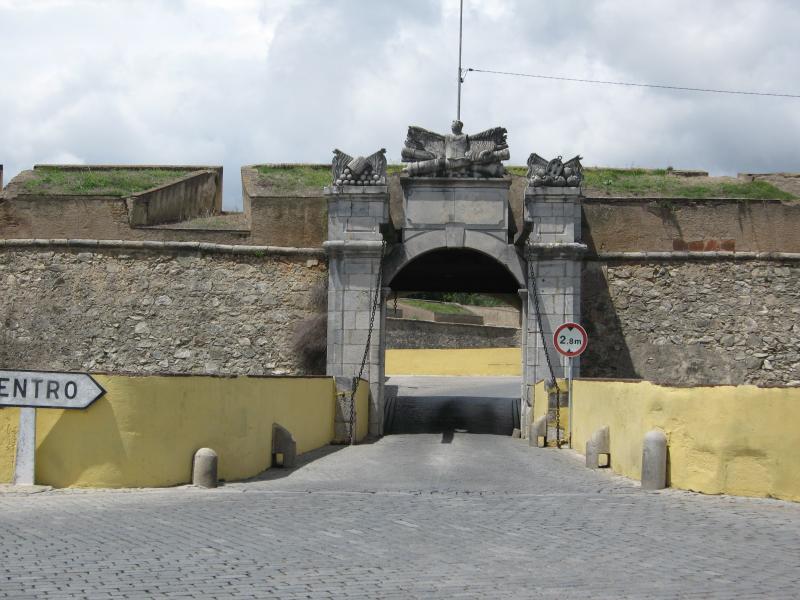 |
Fort de Notre-Dame de Grace (Elvas) |
| 16,3 Km |
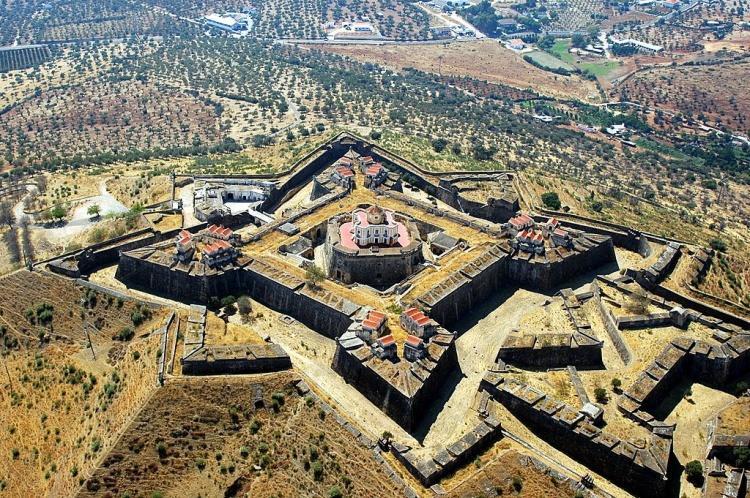 |
Place et Fort d'Elvas (Portalegre) |
| 16,3 Km |
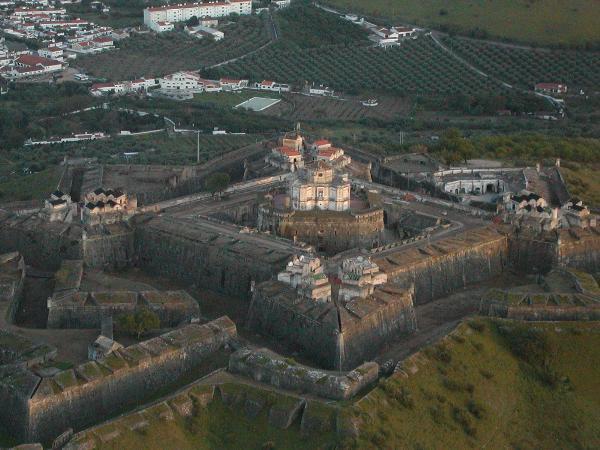 |
Elvas - Informação Geral |
| 16,3 Km |
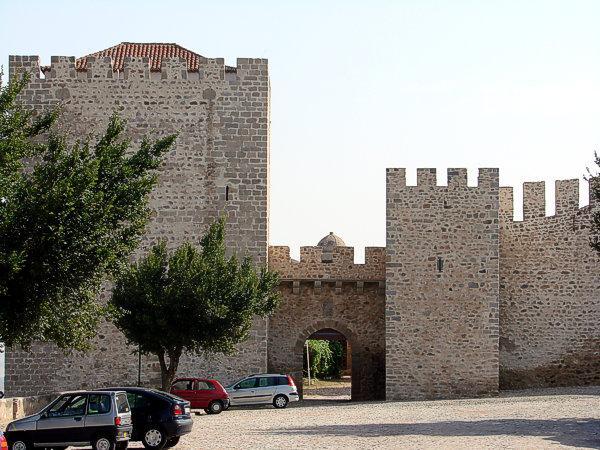 |
Église du couvent de St. Domingos (Elvas) |
| 16,5 Km |
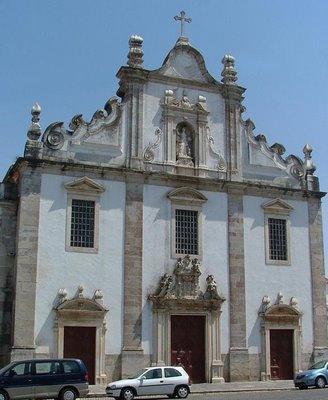 |
Rue d'Olivença (Elvas) |
| 16,7 Km |
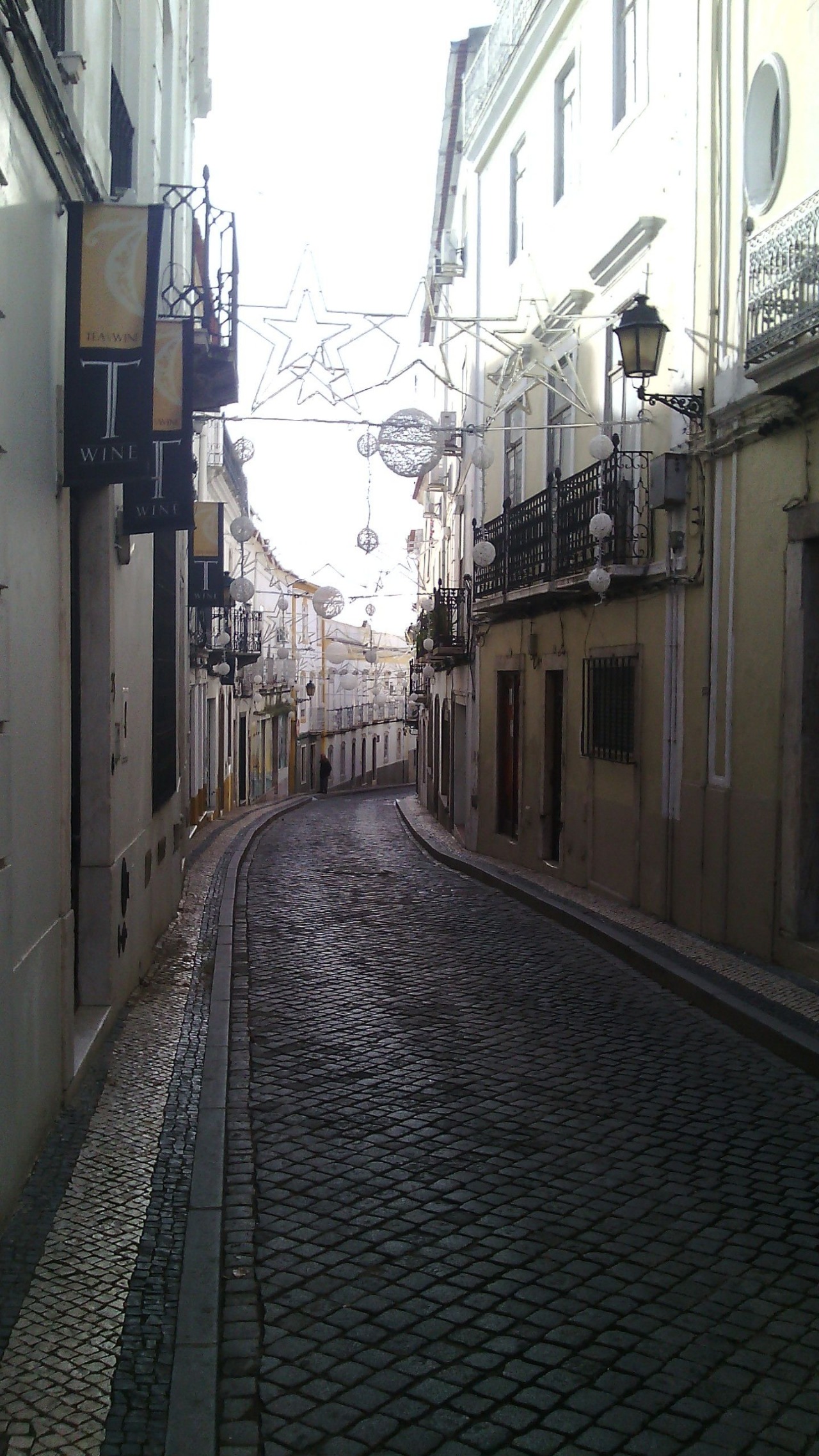 |
Portes d'Olivença (Elvas) |
| 16,7 Km |
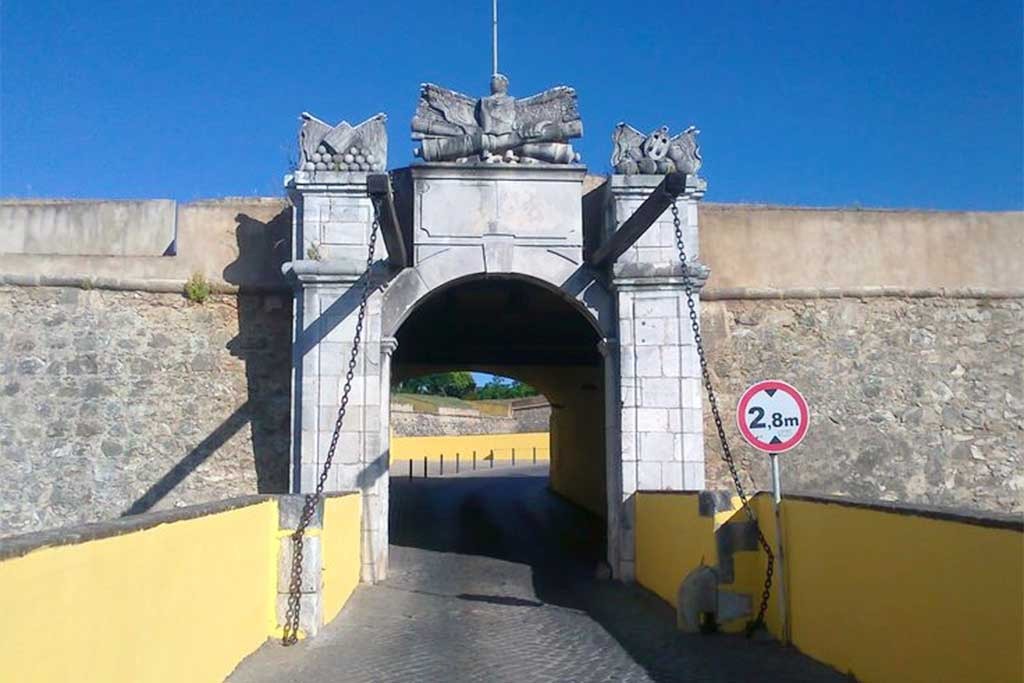 |
Place de la République (Elvas) |
| 16,8 Km |
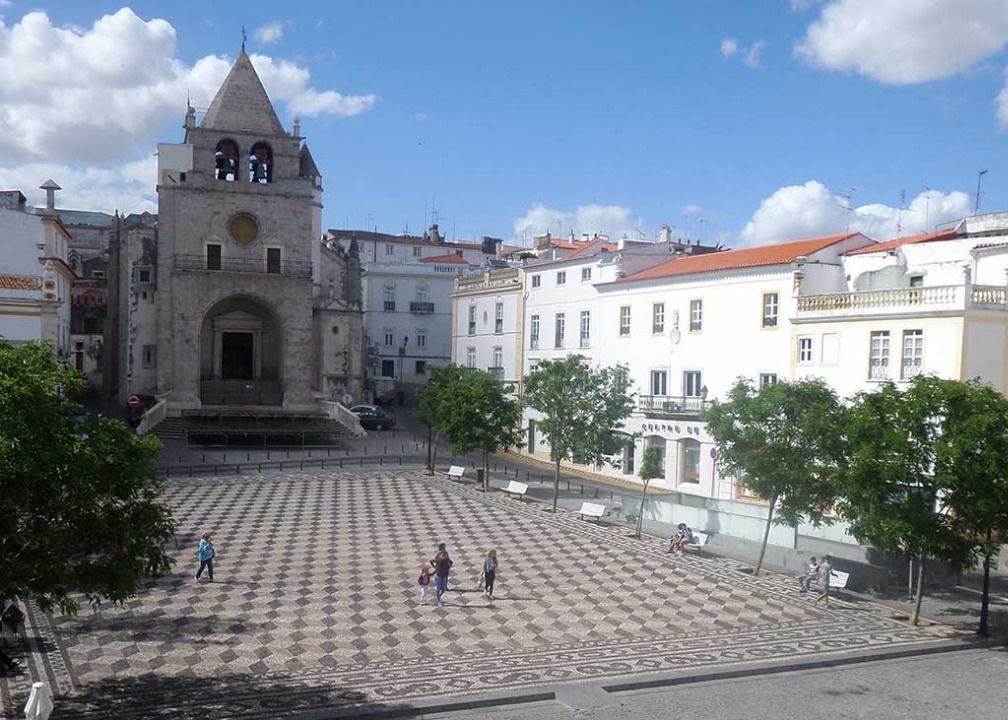 |
Place de la République (Elvas) |
| 16,8 Km |
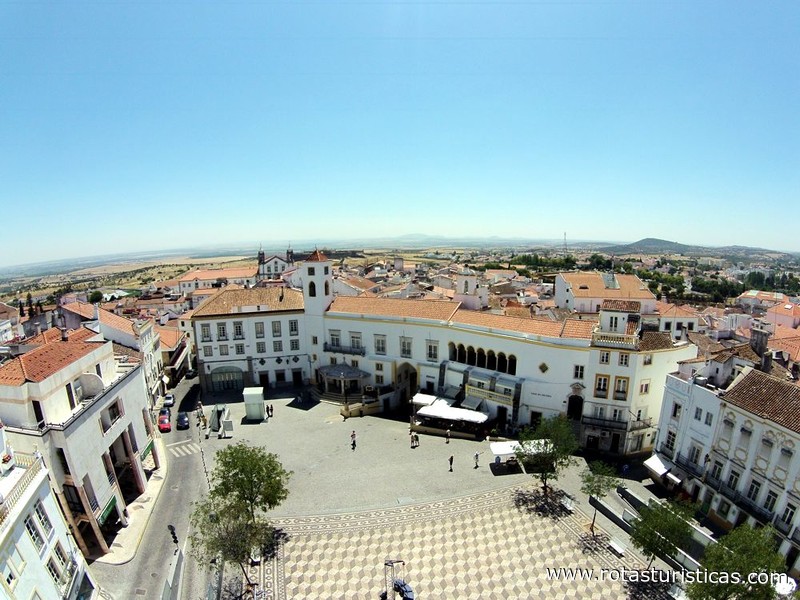 |
Eglise Notre Dame de l'Assomption d'Elvas |
| 16,8 Km |
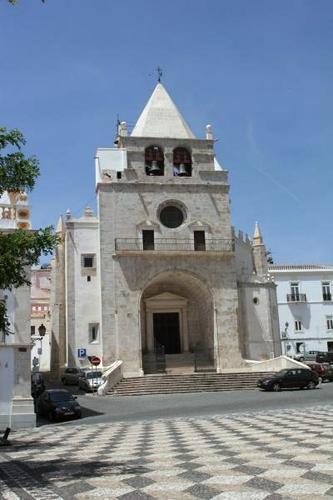 |
Château d'Elvas (Portalegre) |
| 16,8 Km |
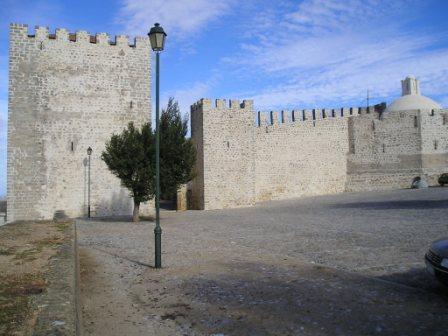 |
Pilori d'Elvas |
| 16,8 Km |
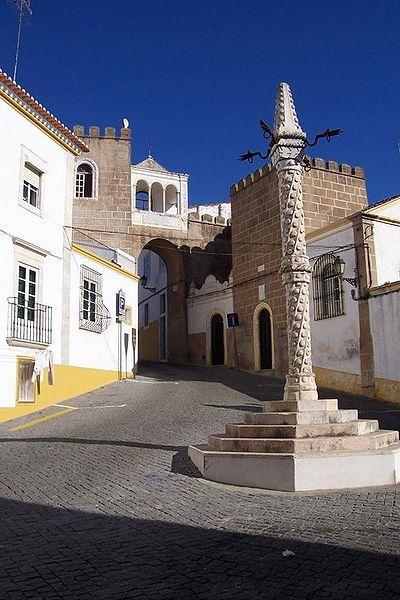 |
Arco de Santa Clara ou Arco do Tempra (Elvas) |
| 16,8 Km |
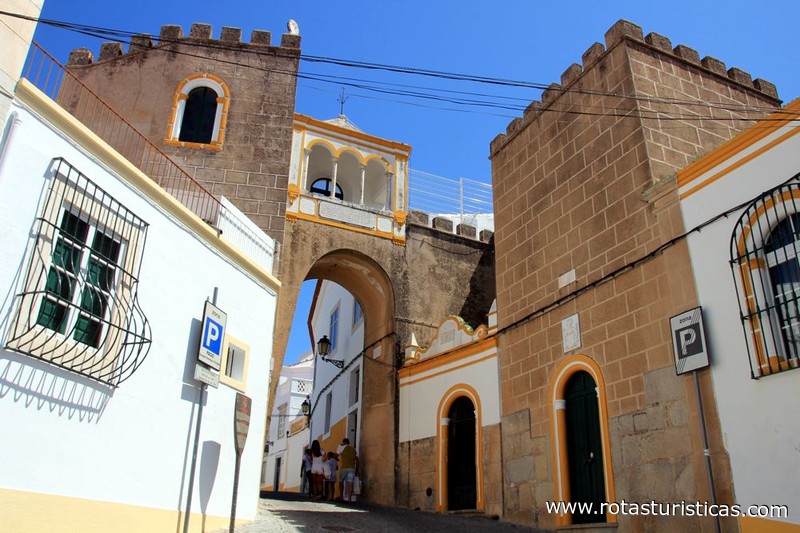 |
Largo da Misericórdia (Elvas) |
| 16,9 Km |
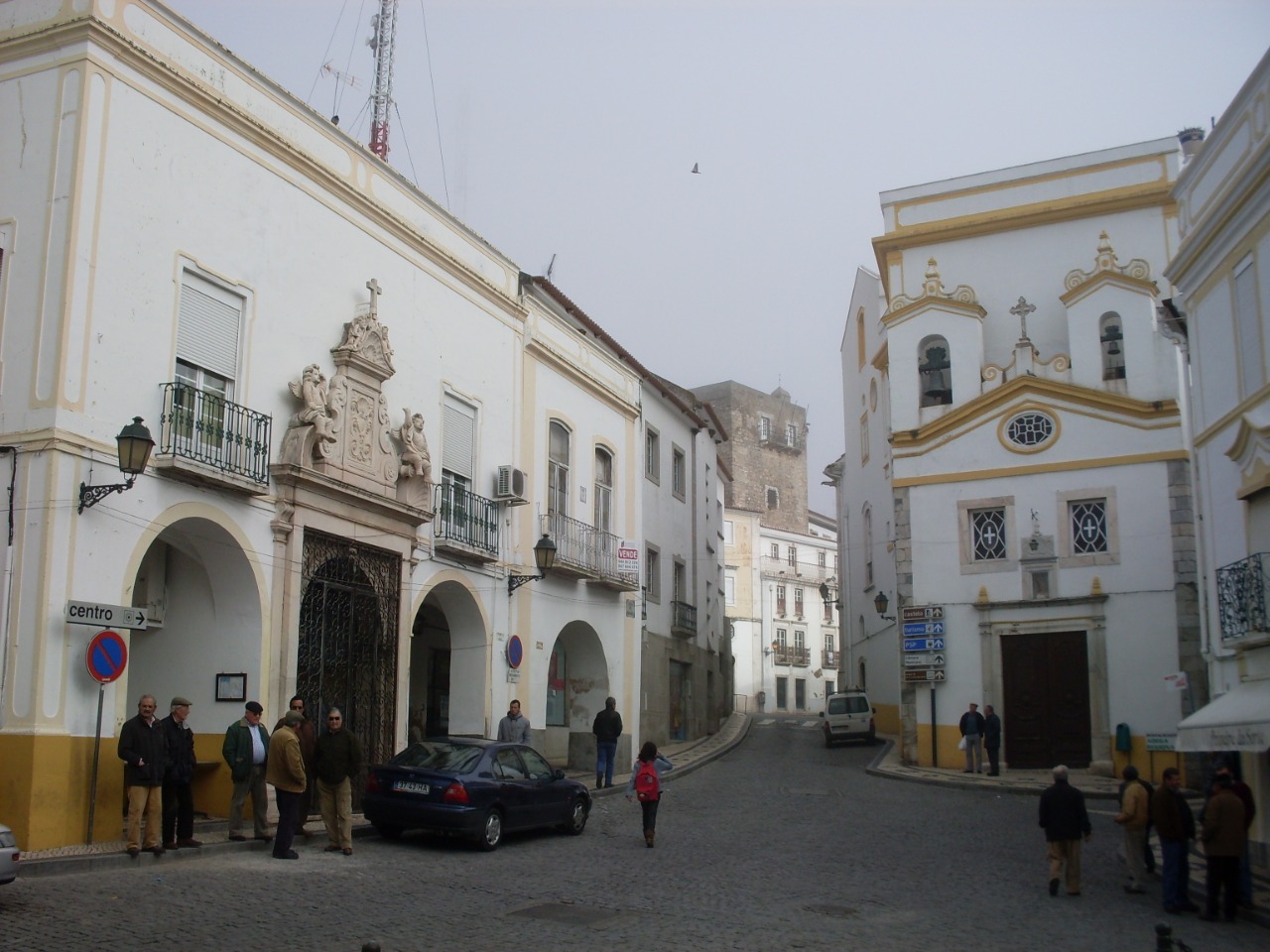 |
Rue des Quarteles (Elvas) |
| 16,9 Km |
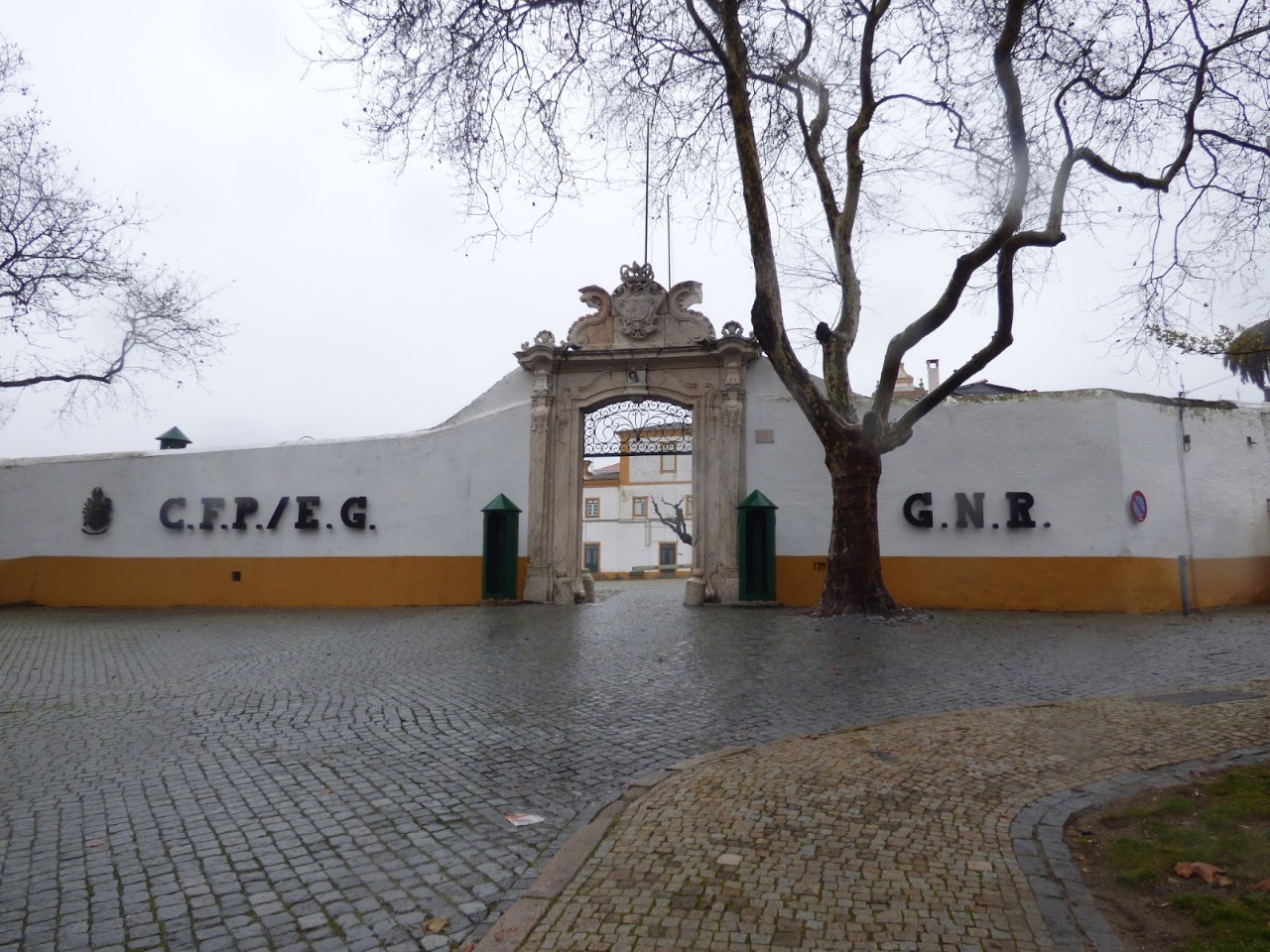 |
Sanctuaire de Saint Jésus de la Miséricorde (Elvas) |
| 17,4 Km |
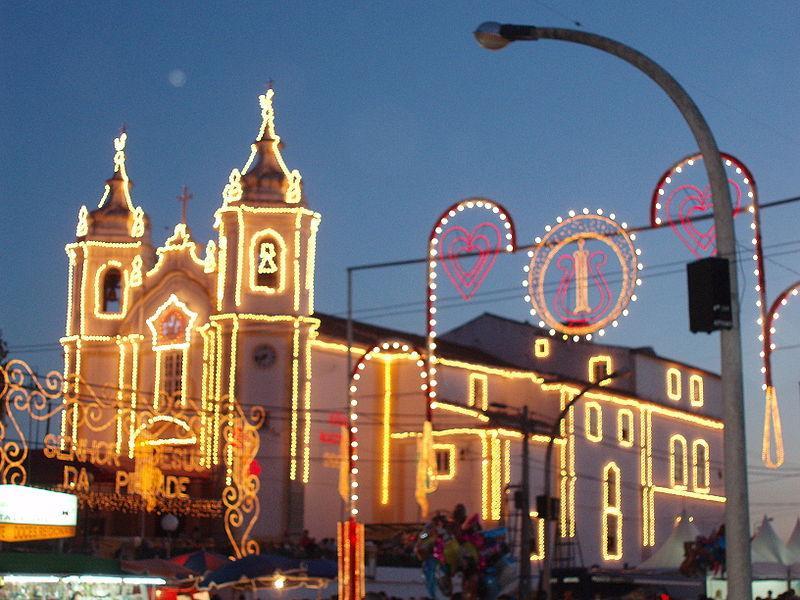 |
Sanctuaire du Seigneur Jésus de la Miséricorde (Elvas) |
| 17,5 Km |
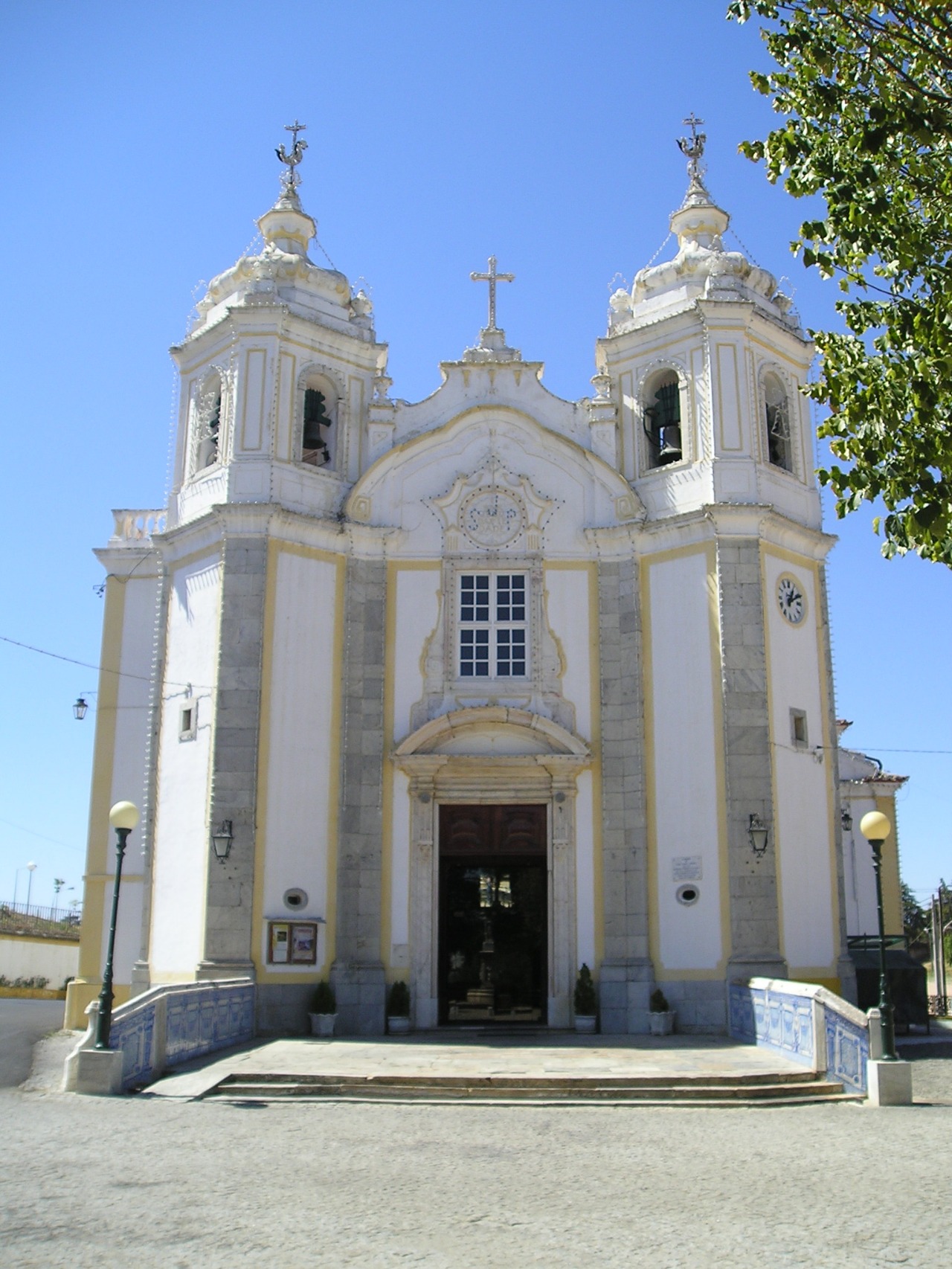 |
Pelourinho de Campo Maior |
| 18,0 Km |
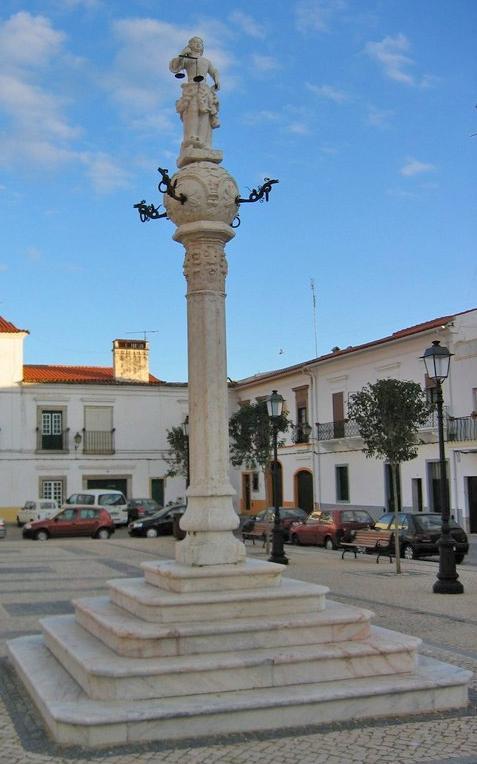 |
Château de Campo Maior |
| 18,0 Km |
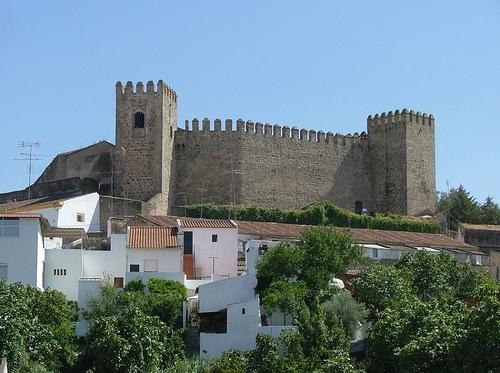 |
Église principale de Campo Maior |
| 18,1 Km |
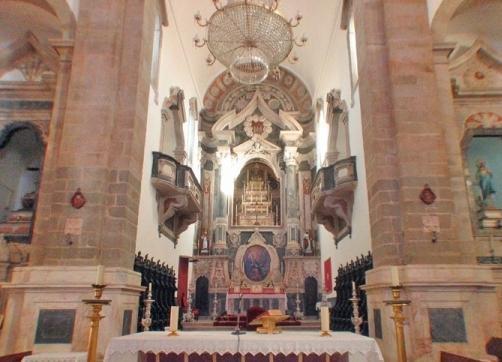 |
Chapelle des os de Campo Maior |
| 18,1 Km |
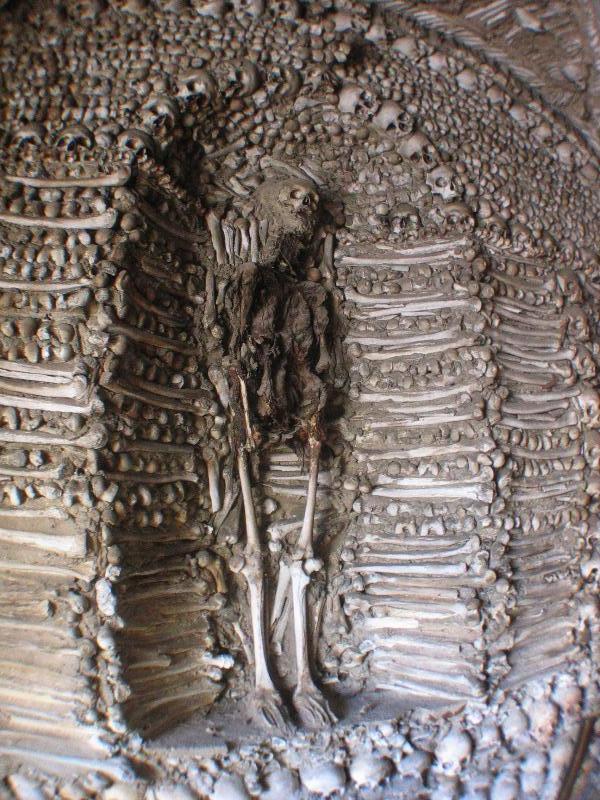 |
Lagar-musée du palais Visconde D'Olivã (Campo Maior) |
| 18,2 Km |
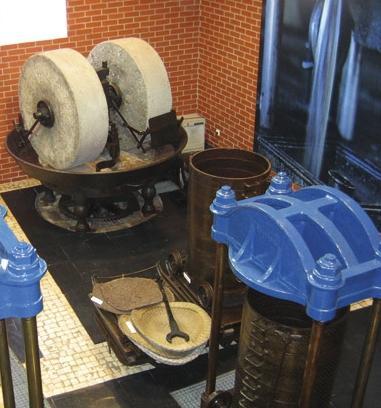 |
Église Saint-Jean-Baptiste (Campo Maior) |
| 18,2 Km |
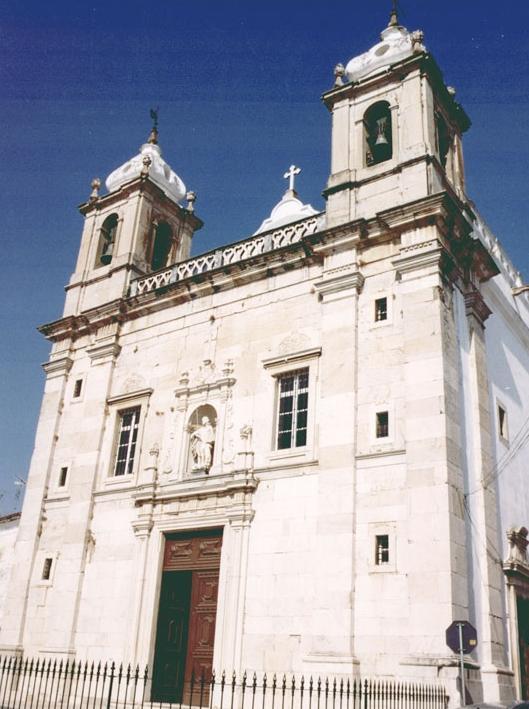 |
Musée d'Art Sacré (Campo Maior) |
| 18,2 Km |
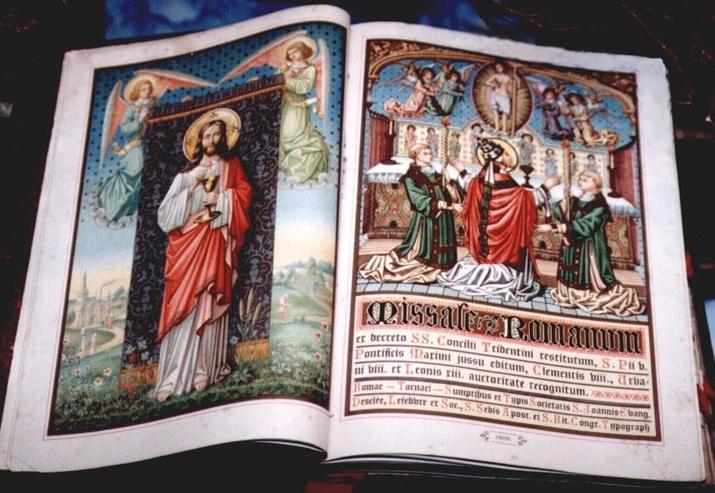 |
Aqueduc d'Amoreira (Elvas) |
| 18,5 Km |
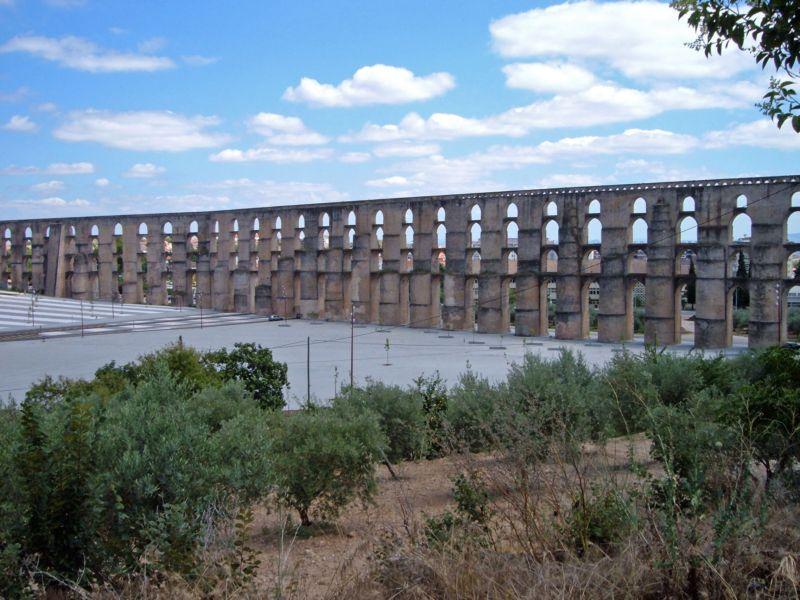 |
Hotel reservation near Badajoz within a radius of 20 km
Why to book with ROUTES TOURISTIQUES
The best prices
Our partnerships with the world´s largest operators offer research on the best market prices.
More options
At Rotas Turisticos you can book the hotel, buy the air ticket, book the transfer from the airport to the hotel and vice versa, book the local excursions, rent the car, take travel insurance and consult the places to visit and where to go.
Holiday Tips & Destinations
Hundreds of holiday destinations with all the options that allow you to easily choose the destination that best suits your dream vacation.
ROUTES TOURISTIQUES
Links


